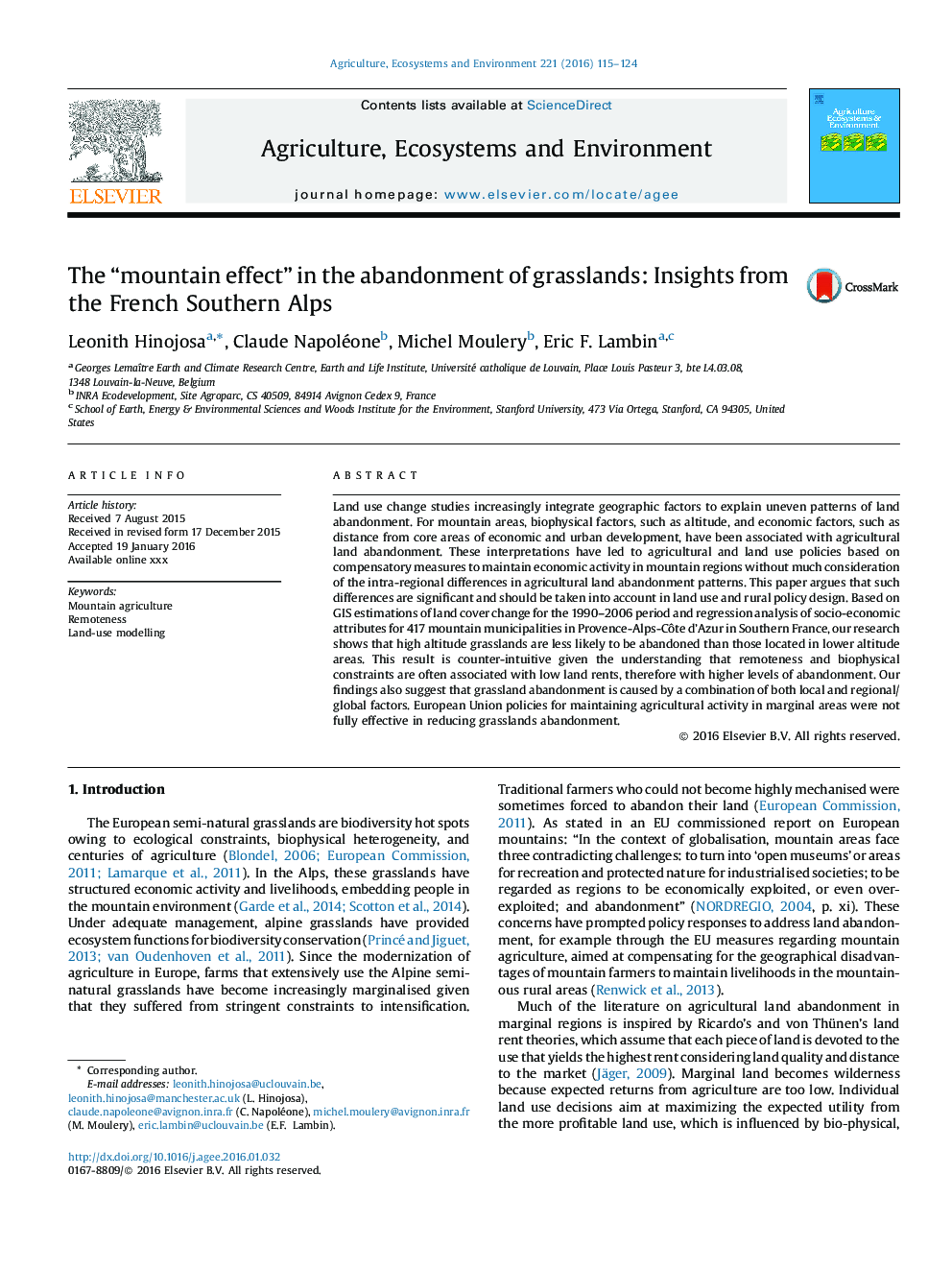| Article ID | Journal | Published Year | Pages | File Type |
|---|---|---|---|---|
| 8487444 | Agriculture, Ecosystems & Environment | 2016 | 10 Pages |
Abstract
Land use change studies increasingly integrate geographic factors to explain uneven patterns of land abandonment. For mountain areas, biophysical factors, such as altitude, and economic factors, such as distance from core areas of economic and urban development, have been associated with agricultural land abandonment. These interpretations have led to agricultural and land use policies based on compensatory measures to maintain economic activity in mountain regions without much consideration of the intra-regional differences in agricultural land abandonment patterns. This paper argues that such differences are significant and should be taken into account in land use and rural policy design. Based on GIS estimations of land cover change for the 1990-2006 period and regression analysis of socio-economic attributes for 417 mountain municipalities in Provence-Alps-Côte d'Azur in Southern France, our research shows that high altitude grasslands are less likely to be abandoned than those located in lower altitude areas. This result is counter-intuitive given the understanding that remoteness and biophysical constraints are often associated with low land rents, therefore with higher levels of abandonment. Our findings also suggest that grassland abandonment is caused by a combination of both local and regional/global factors. European Union policies for maintaining agricultural activity in marginal areas were not fully effective in reducing grasslands abandonment.
Related Topics
Life Sciences
Agricultural and Biological Sciences
Agronomy and Crop Science
Authors
Leonith Hinojosa, Claude Napoléone, Michel Moulery, Eric F. Lambin,
